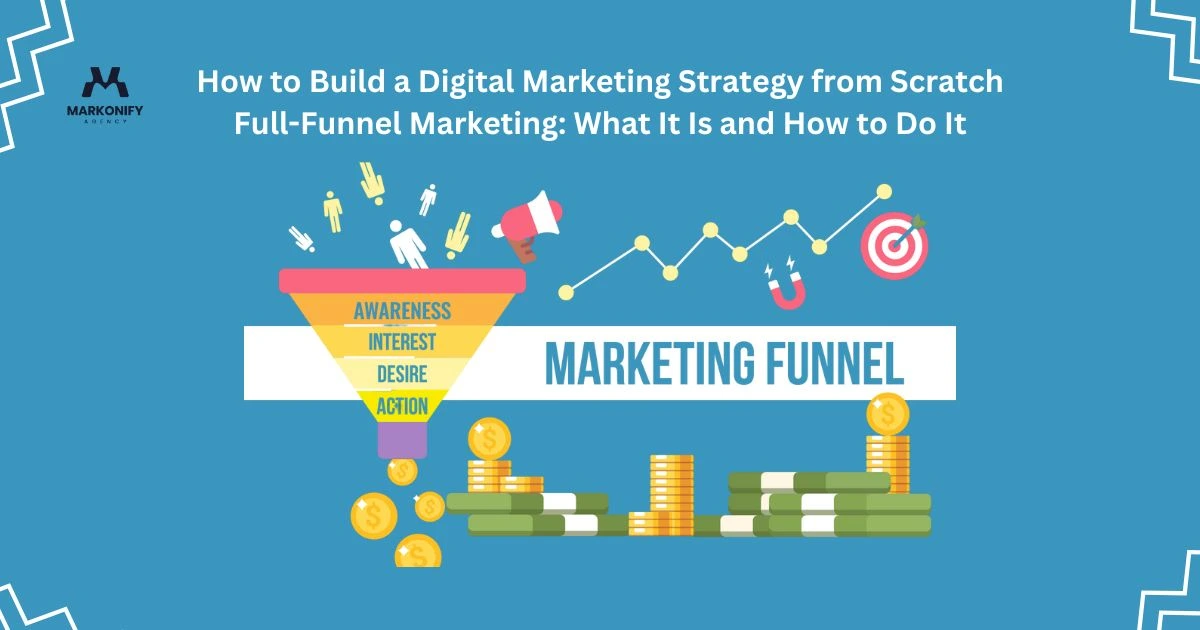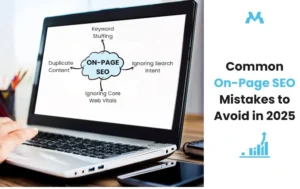How do you build a digital marketing strategy that actually drives results?
In the fast-paced online world, simply running ads or posting on social media isn’t enough. A digital marketing strategy is your roadmap it aligns your content, channels, and tools with business goals to attract, engage, and convert your ideal audience. Below, we break down each part of this strategy and how to build it step-by-step.
What is a Digital Marketing Strategy?
A digital marketing strategy is a long-term plan that outlines how your business will achieve its marketing goals through online channels. It includes content, platforms, tools, and measurement techniques that work together to generate leads and sales.
Strategy vs. Tactics: Why Both Matter in Digital Marketing
Strategy is the big-picture plan of your why and what.
Tactics are the specific actions you take your how.
Example: Strategy is to grow brand awareness; a tactic might be running video ads on YouTube.
Why You Shouldn’t Start Marketing Without a Plan
Without a strategy, your efforts can be scattered and ineffective. A plan helps you stay focused, allocate resources wisely, and measure progress toward clear goals.
Key Benefits of a Clear Strategy
- Better alignment between business and marketing
- Consistent brand messaging
- More efficient use of budget
- Easier performance tracking and optimization
Step-by-Step Guide to Building Your Strategy
Step Define Your Business Goals
Before you market anything, define what success looks like for your business.
Set SMART Goals
SMART = Specific, Measurable, Achievable, Relevant, Time-Bound.
Example: “Increase website leads by 20% in 3 months” is smarter than “Get more traffic.”
Align Goals with Marketing Objectives
Make sure your digital efforts support your overall business strategy e.g., brand awareness, lead generation, or customer retention.
Step 2 Identify Your Target Audience
Your strategy must speak directly to the right people.
Create Buyer Personas
These are semi-fictional profiles of your ideal customers, including demographics, interests, and behavior patterns.
Understand Pain Points and Motivations
Know what problems your audience wants to solve and what motivates them to act. Use surveys, interviews, and analytics to gather insights.
Step 3 Choose the Right Digital Channels
Not every channel suits every business. Choose wisely.
Owned, Earned, and Paid Media
- Owned: Your website, blog, email list
- Earned: PR, social shares, reviews
- Paid: Ads on Google, Facebook, etc.
Platform Selection Based on Audience
Match your platform to where your audience spends time. Example: Use LinkedIn for B2B, TikTok for Gen Z, Instagram for visual brands.
Step 4 Create a Content Plan
Your content should attract and move people through the funnel.
Map Content to the Funnel
Top-of-funnel: Educational blogs
Mid-funnel: Webinars, case studies
Bottom-funnel: Demos, free trials
Use a Content Calendar
Plan, organize, and schedule content regularly. A calendar ensures consistency and timely delivery across platforms.
Step 5 Set Your Budget and Tools
Money and tools fuel your strategy.
Tools for SEO, Email, and Analytic
Use platforms like SEMrush, Mailchimp, and Google Analytics to plan and track campaigns.
Budgeting for Ads and Resources
Divide your budget across channels based on expected return. Leave room for testing and optimization.
Step 6 Track, Measure, and Optimize
Execution without measurement is guesswork.
Define KPIs
Key Performance Indicators (KPIs) may include traffic, leads, sales, conversion rates, and customer acquisition cost.
Use Data to Improve Campaigns
Regularly review what’s working and what’s not. Use A/B testing and audience insights to refine efforts.
Full-Funnel Marketing: What It Is and How to Do It
How do you create a marketing strategy that supports the full customer journey from first touch to purchase?
Full-funnel marketing ensures you’re guiding potential customers at every stage of the decision-making process, not just the final click.
What is Full-Funnel Marketing?
Full-funnel marketing maps your messaging and content to the buyer’s journey: awareness, consideration, and conversion. Each stage uses different formats, tools, and goals.
Top, Middle, and Bottom of the Funnel Explained
- Top (TOFU): Generate attention
- Middle (MOFU): Nurture interest
Bottom (BOFU): Drive conversion
Why Funnel Thinking Works in Digital Marketing
It helps deliver the right message at the right time, increasing engagement, trust, and sales over time.
Building a Full-Funnel Marketing Strategy
TOFU (Top of Funnel) – Awareness
Reach new audiences and build initial interest.
SEO Content, Social Media, and Paid Reach
Use blog posts, reels, and display ads to introduce your brand to those who haven’t heard of you yet.
KPIs: Impressions, Clicks, Engagement
Track visibility, reach, and interaction metrics to see how well your awareness efforts are performing.
MOFU (Middle of Funnel) Consideration
Move interested prospects toward action by building trust.
Lead Magnets, Emails, and Retargeting
Offer downloadable guides, run email series, and use retargeting ads to stay in touch with potential customers.
KPIs: Leads, Downloads, Signups
Focus on metrics that reflect growing interest and deeper interaction.
BOFU (Bottom of Funnel) Conversion
Help the user make a final decision.
Product Demos, Offers, and Case Studies
Use testimonials, limited-time deals, or free consultations to push prospects over the line.
KPIs: Sales, Conversions, ROI
Measure final actions and revenue impact to evaluate success.
Tools to Execute Full-Funnel Marketing
CRM and Automation Tools
Platforms like HubSpot, Zoho, or ActiveCampaign help you track leads and automate communication.
Ad Platforms and Analytics Tools
Google Ads, Meta Ads, and tools like Google Analytics or Hotjar give you insight into campaign performance and user behavior.
Common Mistakes to Avoid
Skipping Funnel Stages
Trying to sell to cold leads too soon often fails. Respect the buyer’s journey.
Using the Same Message for Every Audience
Customize your message based on where the user is in the funnel for higher relevance and results.
Not Tracking Funnel-Specific Metrics
Measuring overall traffic or impressions isn’t enough. Use KPIs specific to each funnel stage.
Conclusion
What’s the secret to sustainable digital growth?
Success comes when your strategy aligns with the customer journey, and every piece of content serves a specific purpose.
Align Content with Each Funnel Stage
Don’t just post content randomly, build it around awareness, trust, and action.
Optimize Continuously Based on Data
Digital marketing is never set and forget. Use performance insights to tweak and refine your efforts regularly.
Build a Strategy That Nurtures, Not Just Sells
Nurturing builds long-term relationships. Your content should guide, educate, and support not just pitch.
FAQs
What is the main difference between a strategy and a tactic?
A strategy is your long-term plan or vision what you want to achieve and why. A tactic is the specific action you take to execute that strategy. For example, your strategy might be to increase brand awareness; a tactic could be running a series of Instagram Reels to reach a younger audience.
Can you succeed in digital marketing with tactics alone?
Not effectively. Tactics without strategy often lead to scattered results. You might get short-term engagement, but without clear goals or alignment, you won’t see sustainable growth or ROI.
How do I create a digital marketing strategy before choosing tactics?
Start by defining your business goals, identifying your audience, choosing the right channels, and setting KPIs. Once your strategy is in place, select tactics that support those goals—like SEO, email campaigns, or paid ads.
Why do businesses often confuse tactics with strategy?
Many businesses jump straight into action posting on social media, running ads without outlining the purpose or long-term objective. This leads to reactive marketing instead of proactive, strategic growth.
Can a single tactic support multiple strategies?
Yes. For instance, blogging can support brand awareness (TOFU), lead nurturing (MOFU), and even conversions (BOFU), depending on how it’s used. The key is how the tactic aligns with the broader goal.




